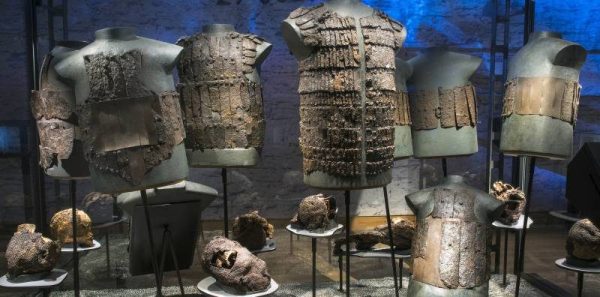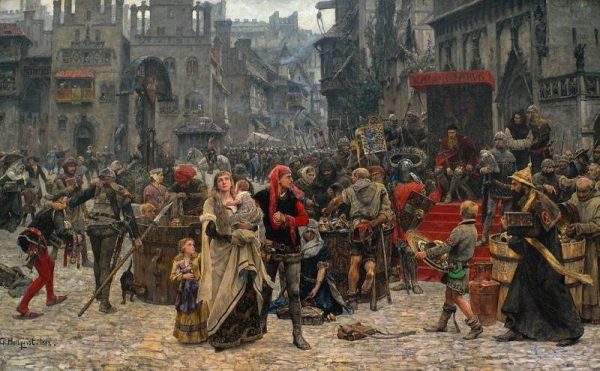Unearthing the Past: The Discovery of a Medieval Woman in Armor Unveils a Tale of Strength and Intrigue
Finding the remains of a medieval woman still wearing armor opens a window into the historical tapestry of battles and societal dynamics.

One such battlefield, the Battle of Visby, fought in 1361 on the island of Gotland, presents a unique archaeological puzzle. In this clash, Danish forces, led by King Waldemar IV, faced off against a diverse population residing in the city of Visby, known for its multiculturalism and trade within the Hanseatic League.
The Battle of Visby holds a distinct place in history, marked by its peculiar aftermath – the mass burial of fallen warriors with their armor intact.

The island’s peasants, resentful of the townspeople, engaged in clashes both before and during the battle. However, the sheer ferocity of the conflict, coupled with the townspeople’s subsequent surrender to the Danish forces, led to an unexpected and mass interment of the deceased combatants.
Archaeologists studying this unique burial site have unraveled a wealth of insights. The medieval warriors, both Danes and locals, were buried in a communal grave without any attempt to remove their armor or clothing. The reasons behind this remain speculative, with two prevailing theories.

Some propose that the July heat and fear of plague influenced the hurried burials, while others suggest that the spoils seized by the victorious Danes were so abundant that dealing with corpses and their armor seemed burdensome.
The study of bone remains from this battlefield reveals not only combat-related injuries but also the organized nature of the soldiers’ actions. The Danish warriors seemed to fight in pairs, demonstrating a level of training and discipline in their tactics.
The aftermath of the Battle of Visby exposes a societal divide, as a third of the island’s army comprised minors and older individuals who perished in the conflict. The stronger and more skilled combatants likely survived and fled.

The extensive archaeological findings shed light on the prevalent armor types of the era. Coat-of-plates, jackets made of plates riveted to cloth or leather, emerged as a predominant form of protection.
Additionally, excavations uncovered chainmail, chainmail hoods, lamellar mittens, and even well-preserved plate armor – one piece traced back to Russia, a testament to Visby’s active trade routes.
The Battle of Visby, with its fraternally buried warriors, challenges historical norms. The circumstances surrounding the mass burial, whether driven by pragmatic concerns or disdain for the fallen, underscore the complexities of medieval life.

This battlefield, frozen in time, invites us to explore the human experiences and societal intricacies woven into the fabric of history.
Related Post
A shocking documentary proves that mermaids do exist
SHOCKING Revelation: Thuya, Mother of Queen Tiye, Was the Grandmother of Akhenaten and Tutankhamun—What Ancient Egyptian Secrets Did She Leave Behind?
Breaking News: Astonishing Discoveries at Karahan Tepe Confirm an Extraterrestrial Civilization is Hiding on Earth, and NO ONE Knows!
Breaking News: Researchers FINALLY Discover U.S. Navy Flight 19 After 75 Years Lost in the Bermuda Triangle!
NASA’s Secret Investigation: Uncovering the Astonishing Mystery of the UFO Crash on the Mountain!
Explosive UFO Docs LEAKED: Startling Proof That Aliens Ruled Ancient Egypt!